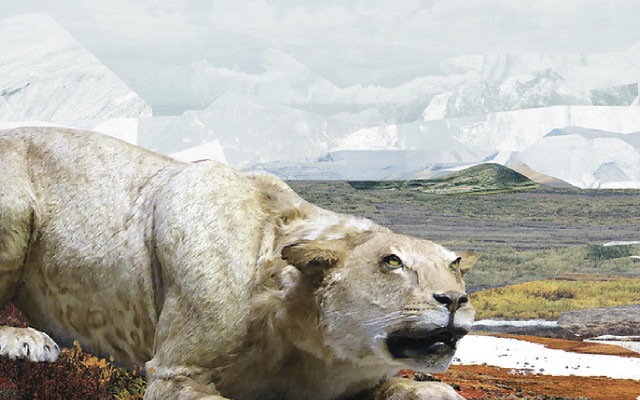Panthera spelaea, formerly referred to as Panthera leo spelaea,[1][2] is a fossil catbelonging to the genus Panthera, which was described by the German paleontologistGeorg August Goldfuss in 1810 under the scientific name Felis spelaea. The first fossil lion skull was excavated in a cave in southern Germany.[3] It probably dates to the Würm glaciation.[4]
The spelaea lion probably evolved in Europe after the third Cromerian interglacial stage, less than 600,000 years ago. Phylogenetic analysis of fossil bone samples revealed that it was highly distinct and genetically isolated from the modern lion occurring in Africa and Asia.[5] It became extinct about 13,000 years ago. The oldest known spelaea lion bone fragments were excavated in Yakutia and radiocarbon dated at least 62,400 years old.[6]Considerable morphological differences and mitochondrial data support the taxonomicrecognition of the spelaea lion as distinct species.[1][2]
(From Wikipedia, June 2018)




